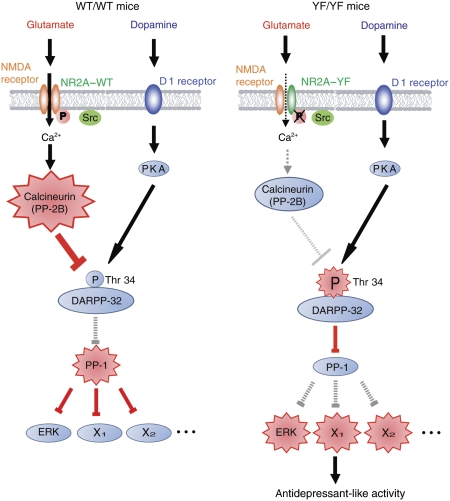Figure 9.
A proposed model for the role of Tyr 1325 phosphorylation on NR2A subunit in depression-related behaviour. (left) In WT/WT mice, Src-mediated Tyr 1325 phosphorylation increases the Ca2+ influx through the NR2A subunit-containing NMDA receptor channels, and thereby activates a Ca2+-dependent protein phosphatase, calcineurin. Activated calcineurin then de-phosphorylates Thr 34 of DARPP-32, leading to the generation of active protein phosphatase-1 (PP-1). Consequently, the phosphorylation levels of PP-1 substrates, including ERK, are decreased. (right) In YF/YF mice, Ca2+ influx through the NR2A subunit-containing NMDA receptor channels is decreased in the absence of Tyr 1325 phosphorylation, resulting in decreased calcineurin activity and increased phosphorylation of Thr 34 on DARPP-32. Phosphorylation of Thr 34 on DARPP-32 converts DARPP-32 into a potent inhibitor of PP-1, and thereby increases the phosphorylation level of PP-1 substrates including ERK. The antidepressant-like phenotype of YF/YF mice may be attributable partly to the increased Thr 34 phosphorylation of PP-1 substrates including ERK.

